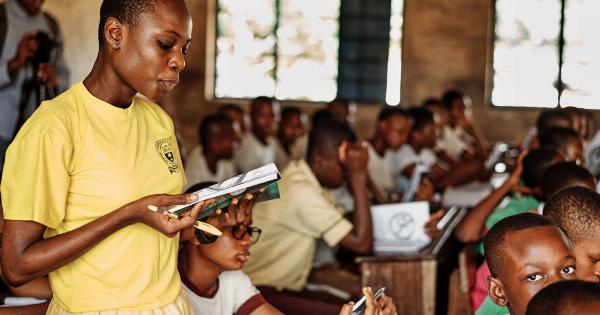Ebola virus disease (EVD), commonly known as Ebola, is a severe and often fatal illness caused by the Ebola virus. It first appeared in 1976 in simultaneous outbreaks in Nzara, South Sudan, and Yambuku, Democratic Republic of Congo.
Since then, sporadic outbreaks have occurred in Africa. The 2014-2016 West African epidemic was particularly devastating, leading to over 11,000 deaths. In this article, we will explore how the human body reacts to the Ebola virus.
The Ebola Virus
Ebola virus is a member of the Filoviridae family and is classified into five species, namely Zaire ebolavirus, Sudan ebolavirus, Tai Forest ebolavirus, Bundibugyo ebolavirus, and Reston ebolavirus.
The Zaire ebolavirus is responsible for most of the EVD cases. The virus is highly infectious and can spread through direct contact with bodily fluids of infected individuals, as well as through contaminated surfaces and materials.
Infection and Entry into the Body
When the Ebola virus enters the body, it primarily targets immune cells called macrophages and dendritic cells. These cells play a crucial role in initiating and coordinating the immune response against pathogens.
The virus enters these cells through specific surface receptors and then replicates inside them.
Disruption of the Immune System
Once inside the immune cells, the Ebola virus interferes with the normal functioning of the immune system. It effectively disables the host immune response, allowing the virus to replicate and spread throughout the body without prompt elimination.
This suppression of the immune system contributes to the severe symptoms associated with Ebola infection.
Rapid Viral Replication
As the Ebola virus continues to replicate within the infected cells, it leads to a massive increase in viral load. The virus spreads to various organs, including the liver, spleen, kidneys, and adrenal glands.
The high viral replication causes extensive damage to these organs, impairing their normal function.
Release into the Bloodstream
During the advanced stage of infection, the Ebola virus is released into the bloodstream in large quantities. This allows it to reach other distant organs and tissues, causing widespread damage throughout the body.
The release of viral particles triggers an inflammatory response and the production of various pro-inflammatory molecules, contributing to the symptoms of Ebola virus disease.
Immune Response and Cytokine Storm
As the immune system tries to counteract the infection, it mounts an inflammatory response. However, in severe cases of Ebola virus infection, an excessive and uncontrolled immune response known as a cytokine storm can occur.
This cytokine storm involves the release of a large number of pro-inflammatory cytokines and chemokines, which not only fail to control the virus but also cause collateral damage to healthy tissues.
Systemic Effects and Organ Damage
The activation of the immune system and the cytokine storm result in systemic effects and organ damage. The walls of blood vessels become leaky, leading to fluid loss and electrolyte imbalances.
This can manifest as severe diarrhea, vomiting, and dehydration. The liver and kidney function may be compromised, resulting in impaired blood clotting and renal failure. The cardiovascular system can also be affected, leading to low blood pressure and shock.
Immune Evasion
The Ebola virus has developed various strategies to evade the immune system. It produces proteins that interfere with the host’s immune response and inhibit the production of certain antiviral molecules.
Some viral proteins also prevent the maturation of immune cells, impairing their ability to mount an effective immune response against the virus.
Diagnostic and Preventive Measures
Early diagnosis and isolation of Ebola virus-infected individuals are crucial for preventing its spread. Diagnostic tests involving the detection of viral genetic material or specific antibodies can confirm infection.
Strict infection control protocols, such as the use of protective clothing and equipment, hand hygiene, and proper waste management, are essential to prevent transmission in healthcare settings.
Treatment and Vaccines
Currently, no specific antiviral drug has been approved for the treatment of Ebola virus disease.
However, supportive care measures, such as fluid replacement, electrolyte balance, and management of complications, can significantly improve the chances of survival. Several experimental treatments and vaccines are being developed and tested to combat Ebola. These include monoclonal antibodies, antiviral drugs, and vaccines that target specific viral proteins.
Conclusion
The Ebola virus causes severe and often fatal illness by targeting the immune system and disabling the host’s ability to mount an effective immune response.
The rapid viral replication, immune evasion strategies, and overwhelming immune response contribute to widespread organ damage and systemic effects. Early detection, isolation, and implementation of strict infection control measures are crucial for preventing the transmission of the virus.
Ongoing research and development of antiviral treatments and vaccines offer hope for better management of Ebola virus disease in the future.




















